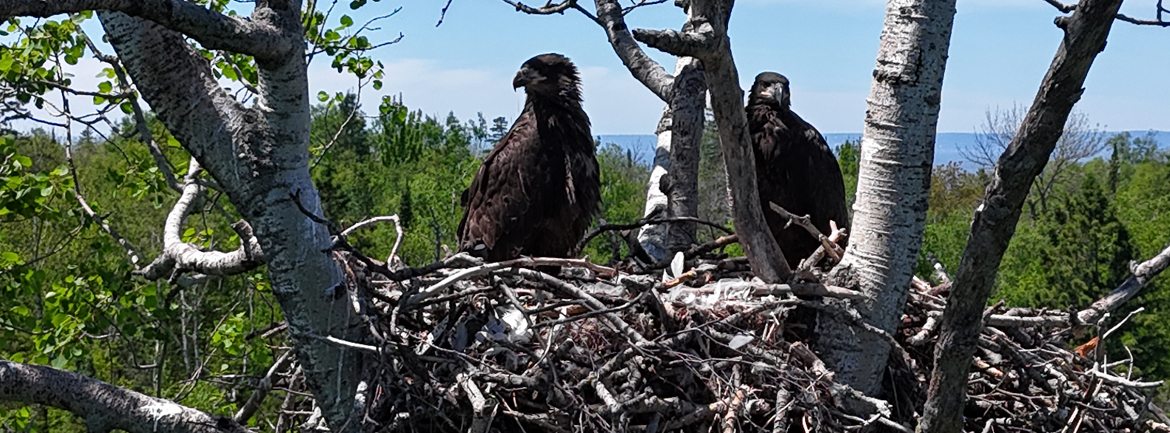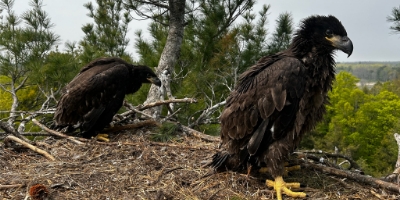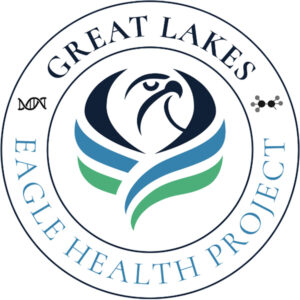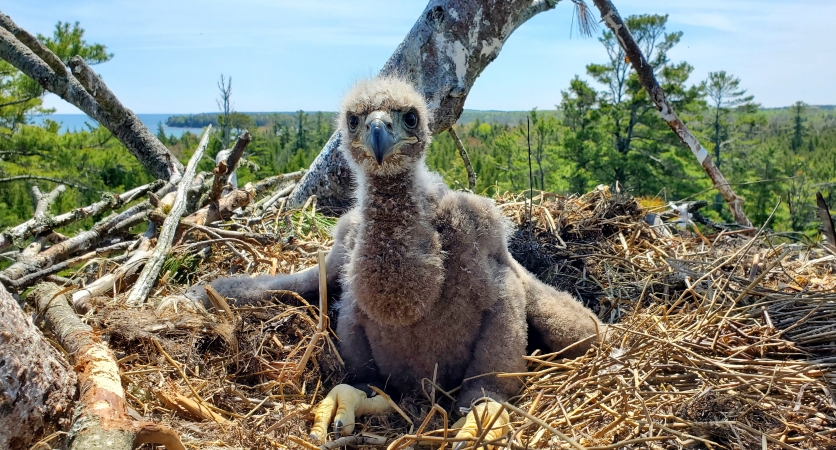
The Great Lakes Bald Eagle Health Project has tracked reproduction success and contaminant levels in eagles across Wisconsin since 1990, with an emphasis on eagles nesting along the Great Lakes shorelines. A team of state, federal, and academic researchers are studying how contamination influences eagle health, which can also tell us how pollution impacts ecosystems and people.
Project Goals
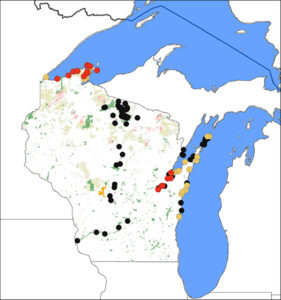
Figure 1. Previous sampling locations of bald eagle nestlings. Red = 2024, Yellow = 2023, Black = 2011-2017.
The two main goals of this study are to:
- Assess the concentration and source of PFAS contamination in the dietary niche of bald eagles at known PFAS-contaminated sites; and
- Compare the physiological and immunological health of eagles in Wisconsin across a contamination gradient.
Bald eagles are a key indicator species of both terrestrial and aquatic environments because their tissues can reflect local contamination and the bioavailability of PFAS in their feeding environment (e.g., terrestrial mammals, reptiles, fish, etc.). Given the previous, but limited studies, on the health impacts of PFAS, on mostly humans and mammals, further studies are needed.
Sampling sites are located in Wisconsin, with an emphasis on eagles nesting along Great Lakes shorelines, at properties with known PFAS contamination (see Figure 1).
Project Team
Our multidisciplinary project team consists of a federal, state, and academic researchers and technicians from our many project sponsors, including Wisconsin Sea Grant (part of the UW–Madison Aquatic Sciences Center), Wisconsin Department of Natural Resources, the Great Lakes Indian Fish and Wildlife Commission (GLIFWC), the U.S. Fish & Wildlife Service, and the Field Museum of Natural History (FMNH).
Results
Results from the research will help guide future studies in the region and shed light on the health impacts of PFAS exposure to wildlife species and bioavailability of contaminants. Moreover, these results will show how top predator species play a role as indicator species in this region for emerging contaminants like PFAS.
Understanding the impacts of PFAS exposure on wildlife health, especially indicator species like bald eagles, can provide management agencies with the necessary science to protect these species in the future.


